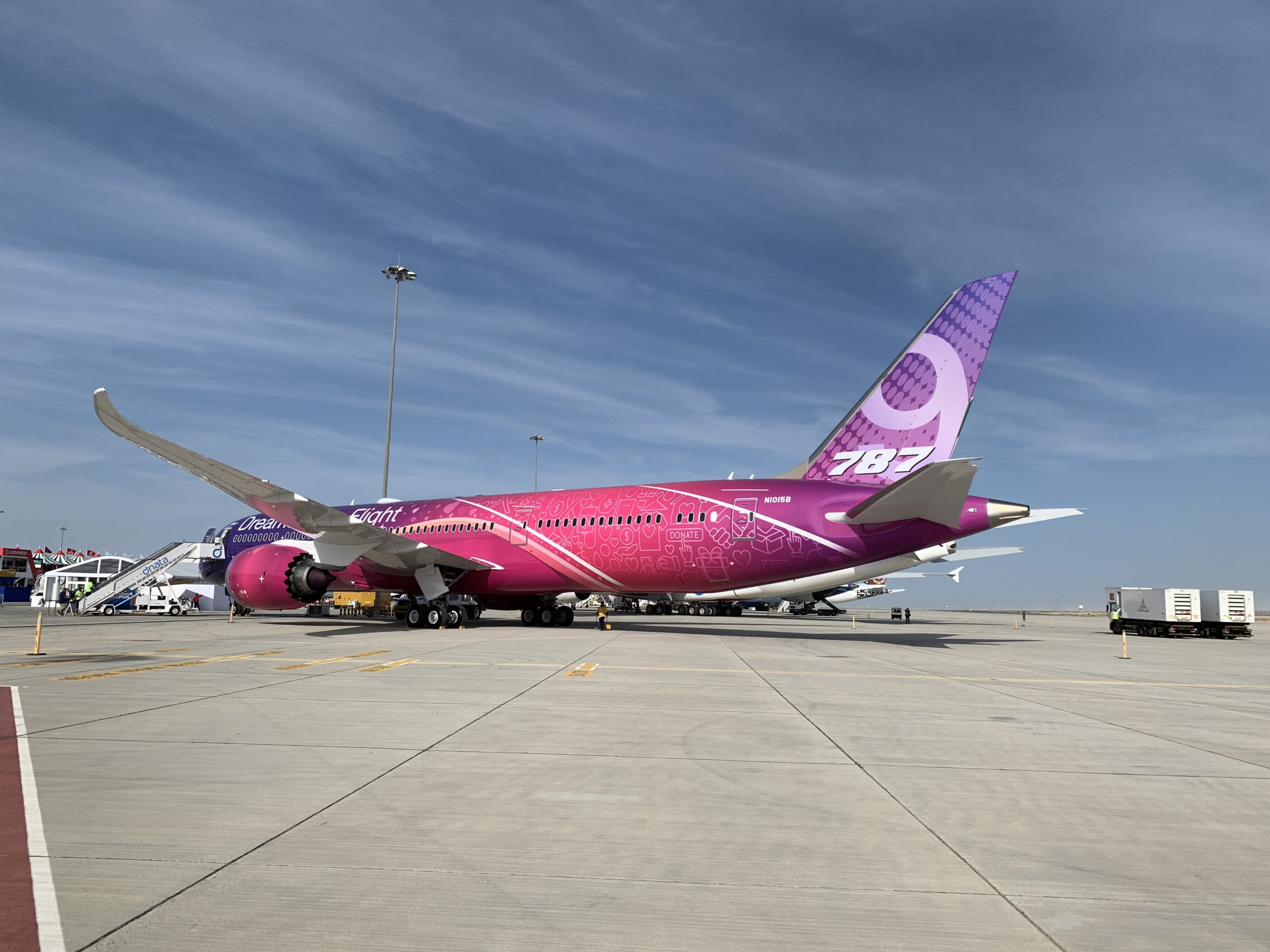
Boeing787 9 scaled
Boeing is seeking an exemption from the FAA from regulations that prevent it from properly addressing the issue of paint peeling on the wings and horizontal stabilizers of the 787. The airframer says that it can solve the problem with a new paint system, but that “several compliance deficiencies (are) delaying completion of this design change project”. Reuters reported on the petition to the FAA on Monday. Boeing seeks exemption to address 787 paint peeling.
The problem of paint peeling on composite parts on the 787 isn’t new. As reported by AirInsight last year, the US Department of Transportation and Boeing addressed the issue in a Safety Alert To Operators that was released back in April 2020. The alert said that “certain Boeing model 787 airplanes are prone to paint adhesion failures due to Ultra Violet (UV) ray damage. Eleven in-service Boeing 787 operators have reported vacuum-type fall-arrest protection systems failing due to the paint lifting off and away from the surface of the upper wing skin. (…) Boeing attributed the paint peeling to Ultra Violet (UV) ray damage between the primer and the resin layers on the upper wing.”
The FAA document that was released on November 14 specifies the paint peeling issues on the upper/lower surfaces of the wing and horizontal stabilizer. As a short-term fix, Boeing suggested “repeated use of speed tape over the affected areas.” Various Dreamliners have been seen flying around with taped wing surfaces to mask the peeling. “Even though the use of speed tape has no effect on the safety of the airplane, the public could perceive an unsafe condition when seeing tape on the wing surfaces,” Boeing says in the petition.
The document adds: “In addition, this paint peeling issue requires the operators to repaint the wing and horizontal stabilizer at a much higher frequency. Since the repaint for UV damage also requires removal of the UV damaged material by sanding, there is an increased risk of collateral copper foil and CFRP damage and subsequent repair, further increasing the cost and downtime of the more frequent repainting.”
Incorporating an extra layer
Boeing says that the solution to the issue would be “incorporating a layer of ultraviolet blocking black topcoat in-between the primer and the white topcoat and by increasing the total allowed exterior finish thickness. Since the exterior finish thickness can affect fuel tank lightning protection, and the black color has an increased absorptivity of UV radiation relative to the existing paint scheme, this change must be assessed for the impact to fuel tank lightning ignition prevention.”
That’s where the request for an exemption comes in. “Like the changes discussed, there are several compliance deficiencies delaying completion of this design change project. Thus, an exemption is needed to allow timely incorporation of this fleet significant maintenance solution to minimize the airplane fleet burden.”
Indirectly related to the fix is an issue of paint thickness near fastener locations. Boeing says it “must revise the 787 Airworthiness Limitations (AWL) and associated type design to address identified compliance deficiencies with respect to paint thickness limitations near fastener locations. Since the AWL package has unrelated compliance deficiencies, coverage for this change is required under this exemption.” The petition covers various other issues on the 787, including the fuel tank structure to prevent vapor ignition, and the installation of equipment and systems.
Similarities with Qatar A350 paint issues
Various media reported on the 787 paint peeling as if it is a new issue, but as said before, it isn’t. But it is getting so much attention because paint peeling and quality issues have been widely reported as part of the legal feud between Qatar Airways and Airbus over the A350 issues. The common factor here is that there are paint quality problems on composite parts. On Qatar’s A350s, has been mostly seen on the fuselage and to a lesser extent also on the wings. According to Qatar Airways and the Qatari regulatory agency QCAA, the issue affects the airworthiness and safety of the A350s and therefore the airline has grounded 21 aircraft in Doha. Airbus and the European agency EASA have stated that safety is not affected.
As Reuters reported on November 11, the dispute between the two parties entered a new level of accusations in a procedural hearing at the London High Court. Qatar Airways accused Airbus of trying to exert influence over EASA on how it should address and communicate on the paint issue. At the same time, Airbus said that the airline had been seeking influence over QCAA. The High Court is expected to extensively address the case in the summer of 2023.
Views: 20




“several compliance deficiencies (are) delaying completion of this design change project”?
Sounds like a Skill Issue, Boeing.